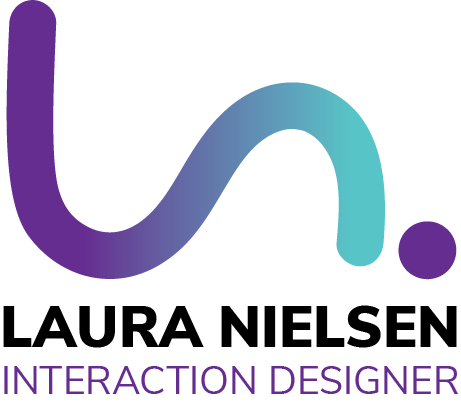“How might we eliminate last-minute restaurant food waste in Los Angeles”?
Finding Value for last minute food in L.A
UX RESEARCH - UX DESIGN - UI DESIGN - USABILITY TESTING
OVERVIEW
Project Background
For my senior thesis project, I explored the current practices restaurants implement to address their surplus food issues. After observing the ridiculous amount of perfectly good food being wasted, I saw new opportunities to reduce business costs, increase consumer savings, and create major social and environmental benefits. I explored ways to eliminate last-minute restaurant and upscale market food waste in L.A.
Overeats is a mobile food app that connects restaurants and upscale markets with leftover last minute food to customers who want to eat it! Users can view specific restaurants and select markets near them where they browse selections of surplus food. Once a user selects the food at a discount, it's delivered or picked up.
ROLE:
UX|UI Designer | UX Researcher
PROJECT MENTOR:
Amiee Lee
TOOLS:
Pen and Paper, Illustrator, Sketch, XD, Photoshop, Figma
DATE:
Feb 2019 - May 2019
GOALS:
Utilize UX research methods to uncover potential opportunities
Create actionable solutions based on observable data
Investigate how to connect users to restaurants and markets with surplus food
Prototype and test solutions with users to validate the concept
PROBLEM
Implications of wasted food
Food waste is a huge problem with massive implications for our environment. Wasted food consumes a staggering 1/5 of our water supply, accounts for 1/5 of our landfill volume and is one of the top contributors to climate change. Food waste is not just a problem in America but across the globe. About 1.3 billion tons of food is wasted globally each year, and around 40% of that comes from restaurants.
Unfortunately, restaurants and markets in L.A do not have viable options to sell last minute food, consequently, they lose over 25 billion dollars per year. (https://www.chefhero.com/blog/restaurant-food-waste-profit-margin) The concept of selling surplus food has gained some traction on the East coast and Europe. My area of focus is on recovery efforts for new markets in L.A, where solutions could have measurable impacts on consumers and businesses.
DISCOVERY
Competitive Analysis
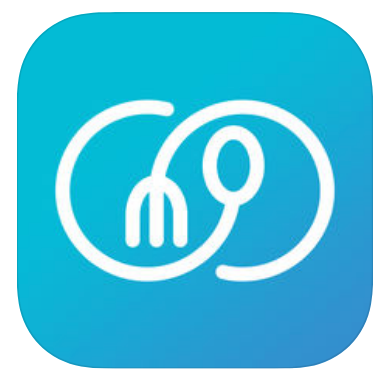
FOOD FOR ALL
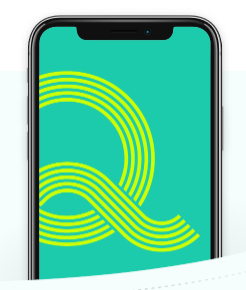
RESQ CLUB

Food For All
Food for all allows users to buy leftover food from nearby restaurants for 50% off. Users must go pick up their food at a time designated by the restaurant before they close. Available In Boston and New York area.
RESQ club
Resq club expands its offerings to include market snack items at 50% off as well. Food is available for pick up at a designated time serving the European countries of Finland, Sweden, and Berlin.
Too Good To Go
An app operating in the UK has a similar model. Users also have the option to give meals to people in need by donating 1 British pound or more through the app, according to the website.
DISCOVERY
Stakeholder Interviews
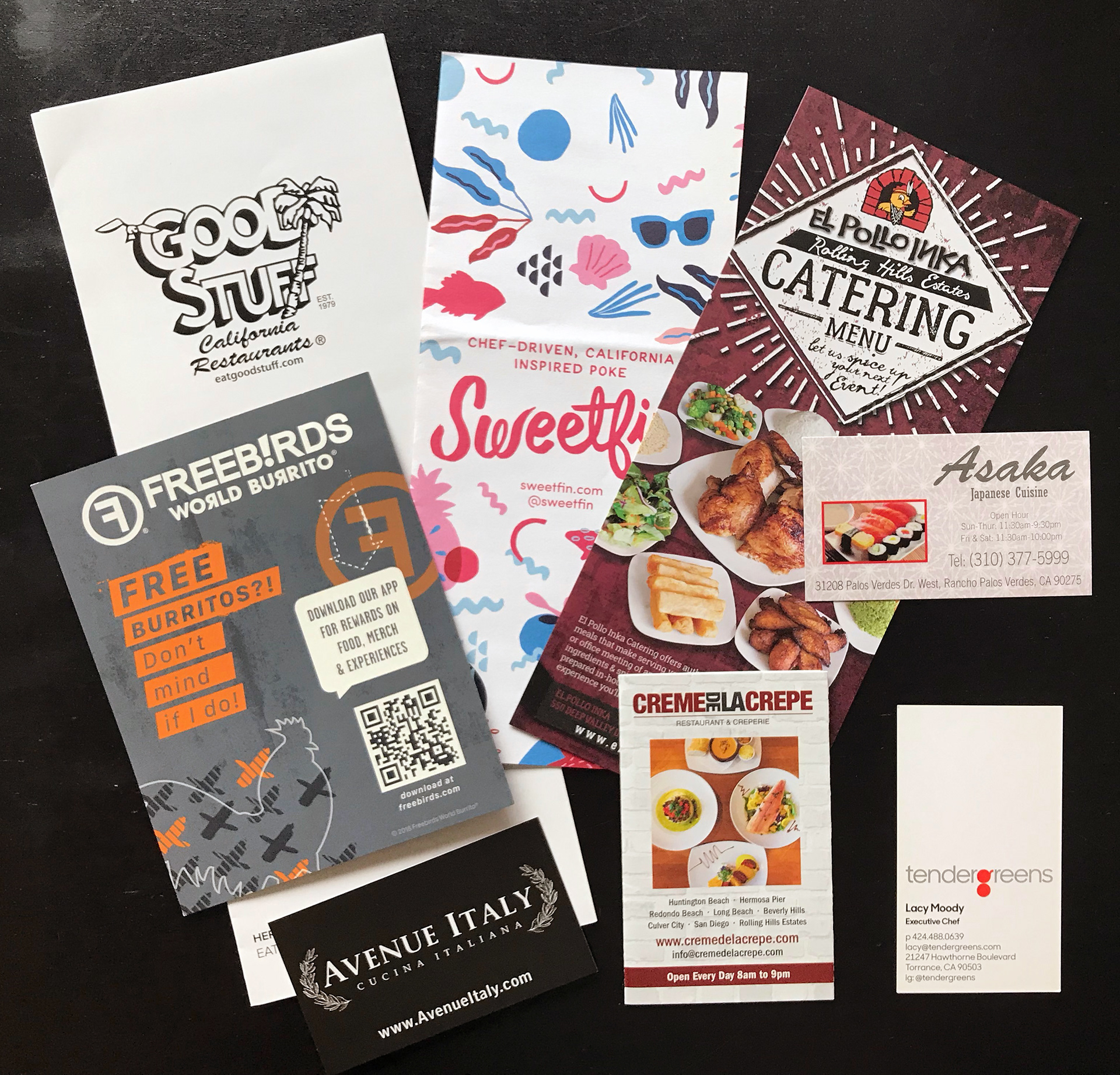
Restaurants I visited

Chef at food case in Whole Foods
I conducted interviews with 8 restaurant owners, market managers and chefs in L.A. to understand how they deal with surplus food. The results gathered from the interviews allowed for the examination of how these stakeholders feel about selling food that customarily is thrown away and if a behavioral shift is even possible.
The questions were broken down into three categories:
Perspectives, Experiences and Ethical Views.
Q- How much excess food does this restaurant have left over each day that it isn't sold?
Results varied from a few extra meals (small restaurants) to several pounds of food waste daily (markets with hot food cases)
Q- Do you have a system of use for this food?
No restaurant or market had a solution for food that has been heated, after four hours, it must be thrown away according to the health code.
Q- Would you feed this food to your family?
Managers and owners with more control indicated it would depend on the food quality and the ability to keep the food fresh. There was a clear preference that food of this nature would be best consumed immediately.
Q- Could you possibly see this food included on your menu at a discount?
“If we were able to sell it before we had to toss it that would be a win-win for everybody”
Jason, lead chef: Tender Greens
When asked if there were alternatives such as food donation, or allowing food to be taken home by employees there were mixed results ranging from no practice to one restaurant owner literally packing it up and giving it away himself. When asked the question, “What is the biggest obstacle to overcome so food can be sold and not wasted”? participants expressed the following frustrations:
• Food that has been heated has a four-hour window
• Lack of customers on any given day
• The food is available at odd or late hours
• Company policy
DISCOVERY
User Interviews
I conducted in-person interviews with 8 patrons in 10 restaurants I visited. I was curious to learn their eating habits, restaurant dining preferences and what they would be willing to sacrifice in order to get food at a discount.
“Personally, I’m sure it depends on the restaurant. Here the food is made fresh so it would be less likely to be inedible”
Male age: 50’s
“That's fine with me, I would want to be able to refuse it though, like if it looks weird”
Female age: late thirties
“Heck yea, Why not”?
Male age 23
“I totally would do it, awesome idea”
Male age 21
After analyzing my results from stakeholder and customer interviews, I grouped my findings into four themes represented by their responses: cost, quality, convenience, and versatility.
Top four themes of my research
Top insights of my interviews were:
• The cost was the number one consideration in selecting restaurants for families
• Convenience was the first consideration for singles
• “Surplus food” and “Extra food” were preferred terms to “leftover food” or “repurposed food”
• Fine to purchase last minute foods from upscale markets as well as familiar restaurants
• Food quality was important with an emphasis on healthy options
DISCOVERY
Quantitative Data
User screen shots with highlights of delivery fees
A trend emerged among users I interviewed between the ages of 23 to 35. Although cost ranked as a secondary consideration for this group, there was seemingly no hesitation in ordering food for delivery. Why? Necessity.
“I’m hungry, there's nothing to eat and I can’t drive anywhere with no car ”
Jessie, age 23
“I can’t cook ”
Tyson, age 24
“I wish I could eat at home more, but I never have time”
Amber, age 27
To probe this insight further, I created a survey and posted it on Reddit food forums to discover:
• How popular is food delivery in L.A?
• What mattered most to users about food delivery?
• What compromises would they make to get value-priced food?
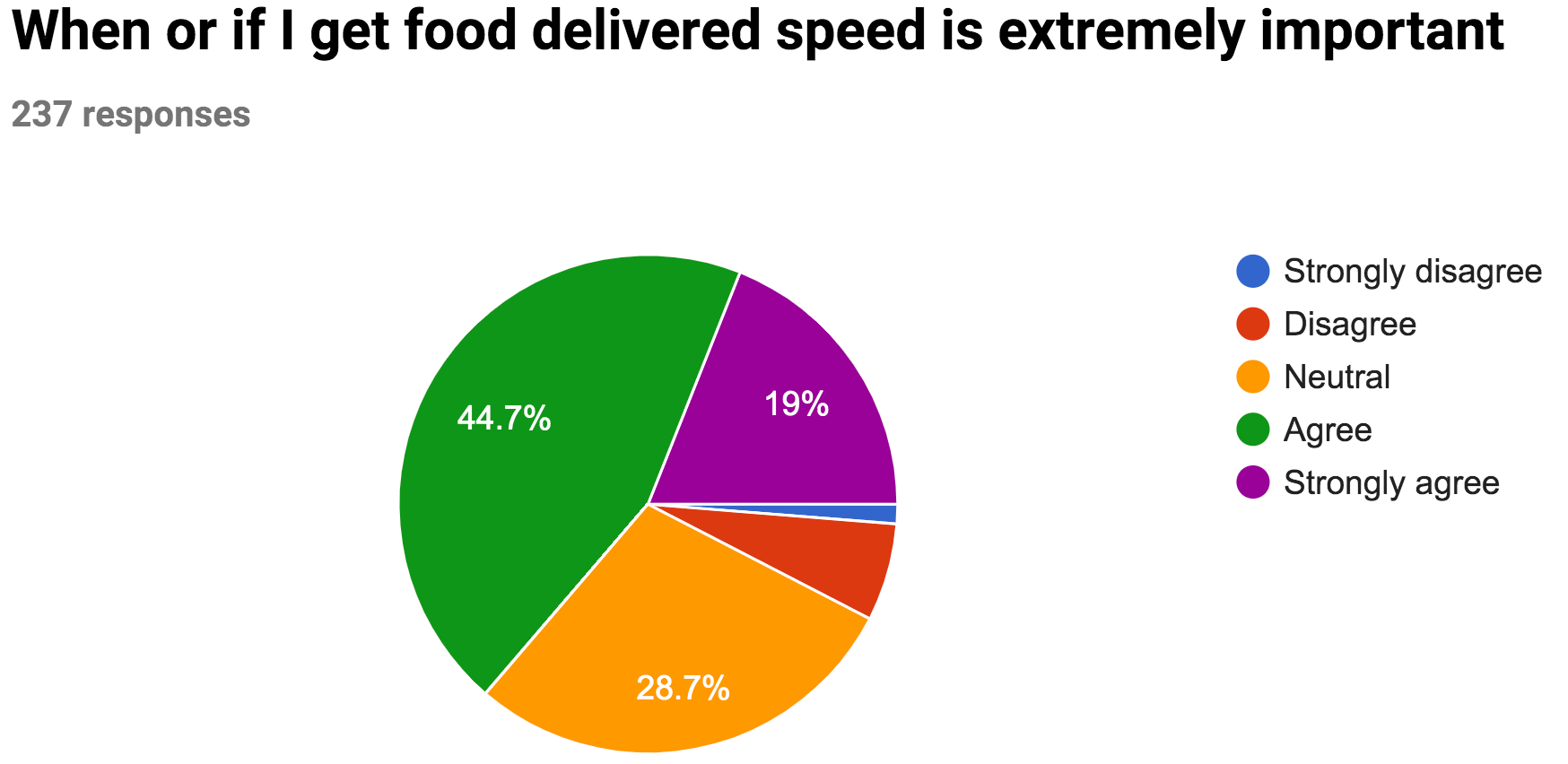
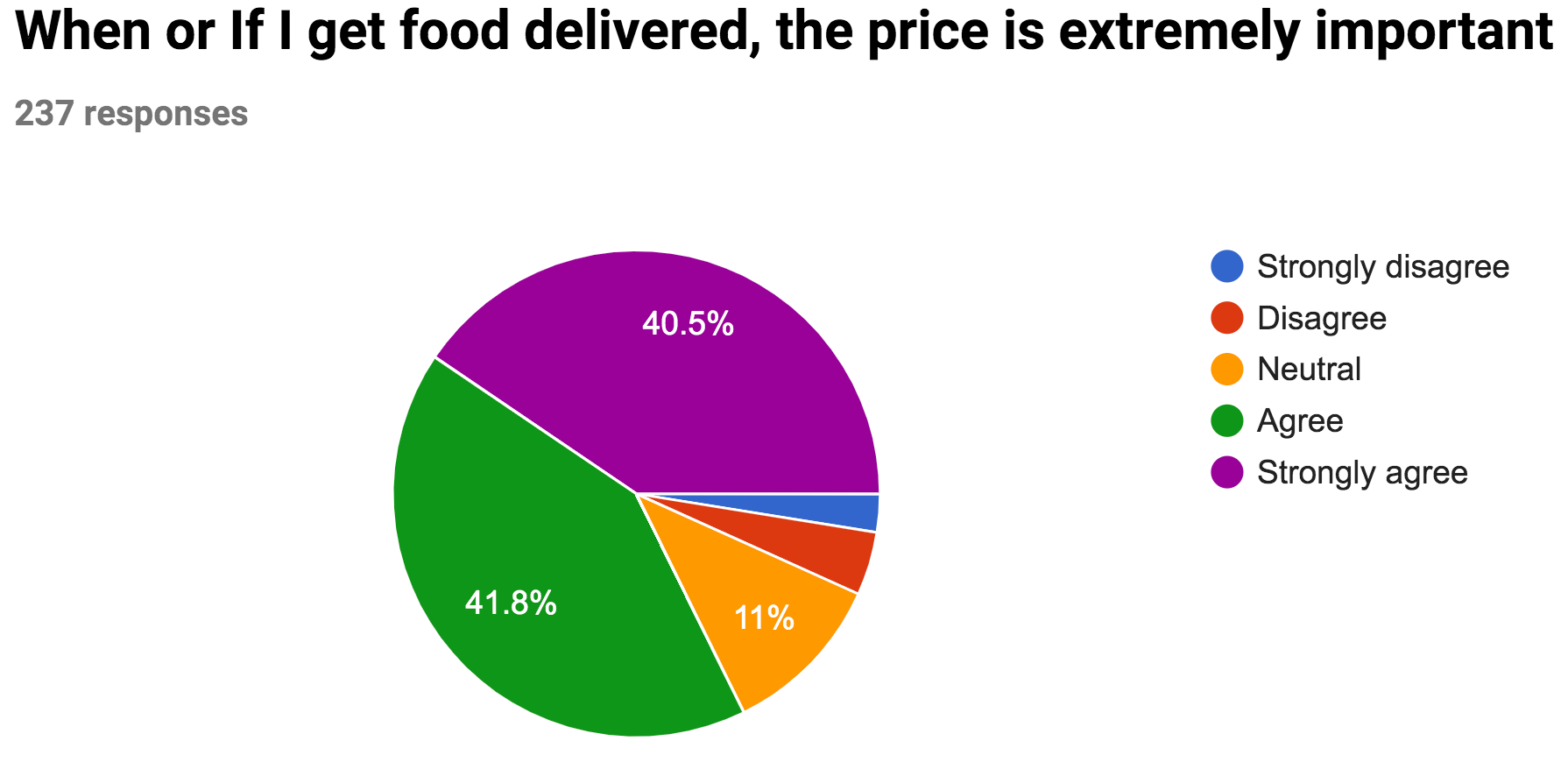

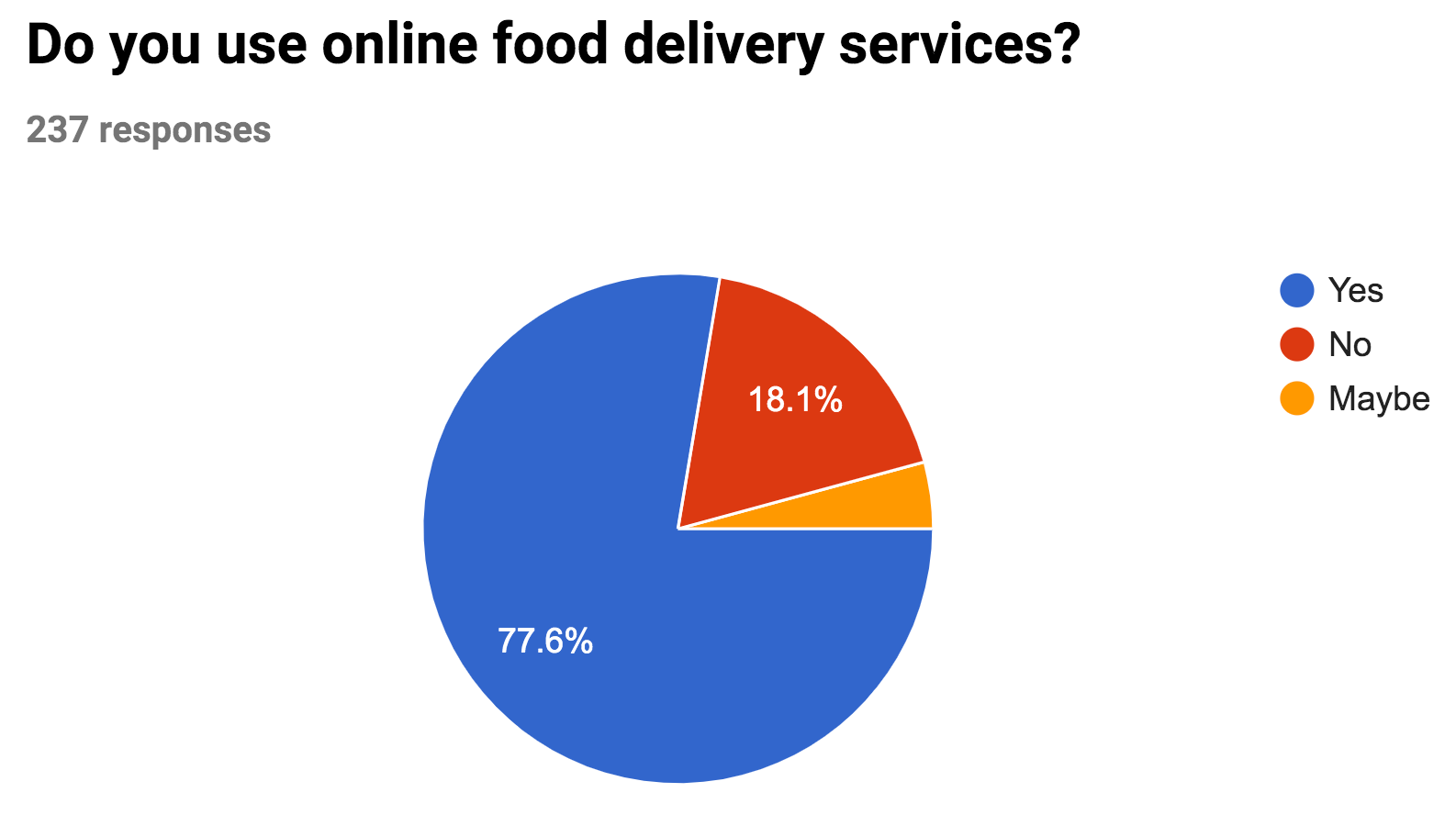

Key insights:
• Over 75% of users surveyed use a food delivery service, despite the cost.
• Over 80% considered cost an important consideration and would be willing to compromise hours of availability to receive food at a discount.
This data supported my hypothesis that offering last minute food for sale at a discount would leverage the cost of delivery. This could provide value for both businesses and consumers while making a dent in the restaurant food waste dilemma.
DISCOVERY
Food Provider practices
Current practices for prepared hot food
I investigated whole foods hot case situation and observed how they track temperature, waste and follow food safety guidelines. It seemed very dated and ineffective. I considered a more sophisticated recording and tracking system given the advantages such methods could offer.
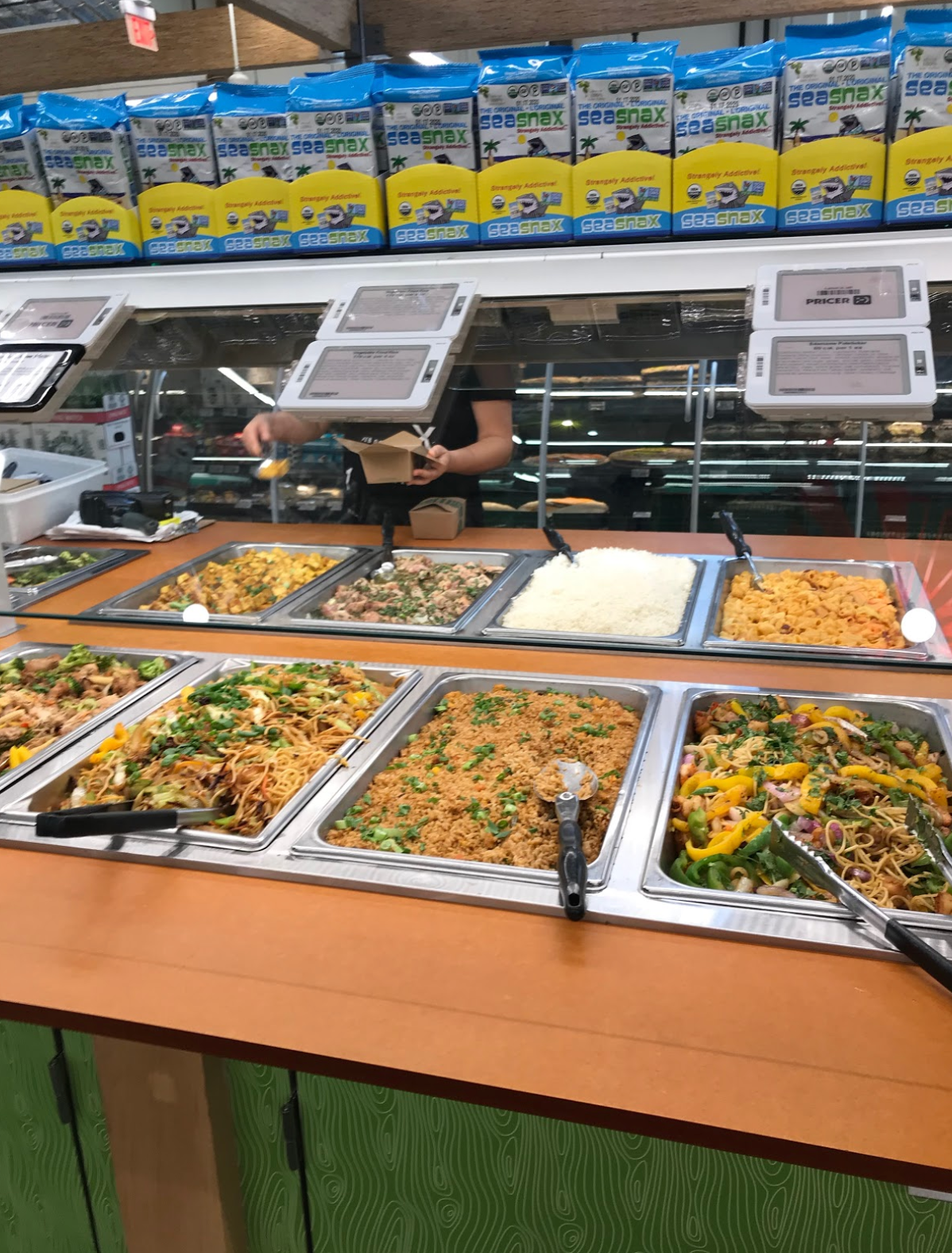
Hot case food
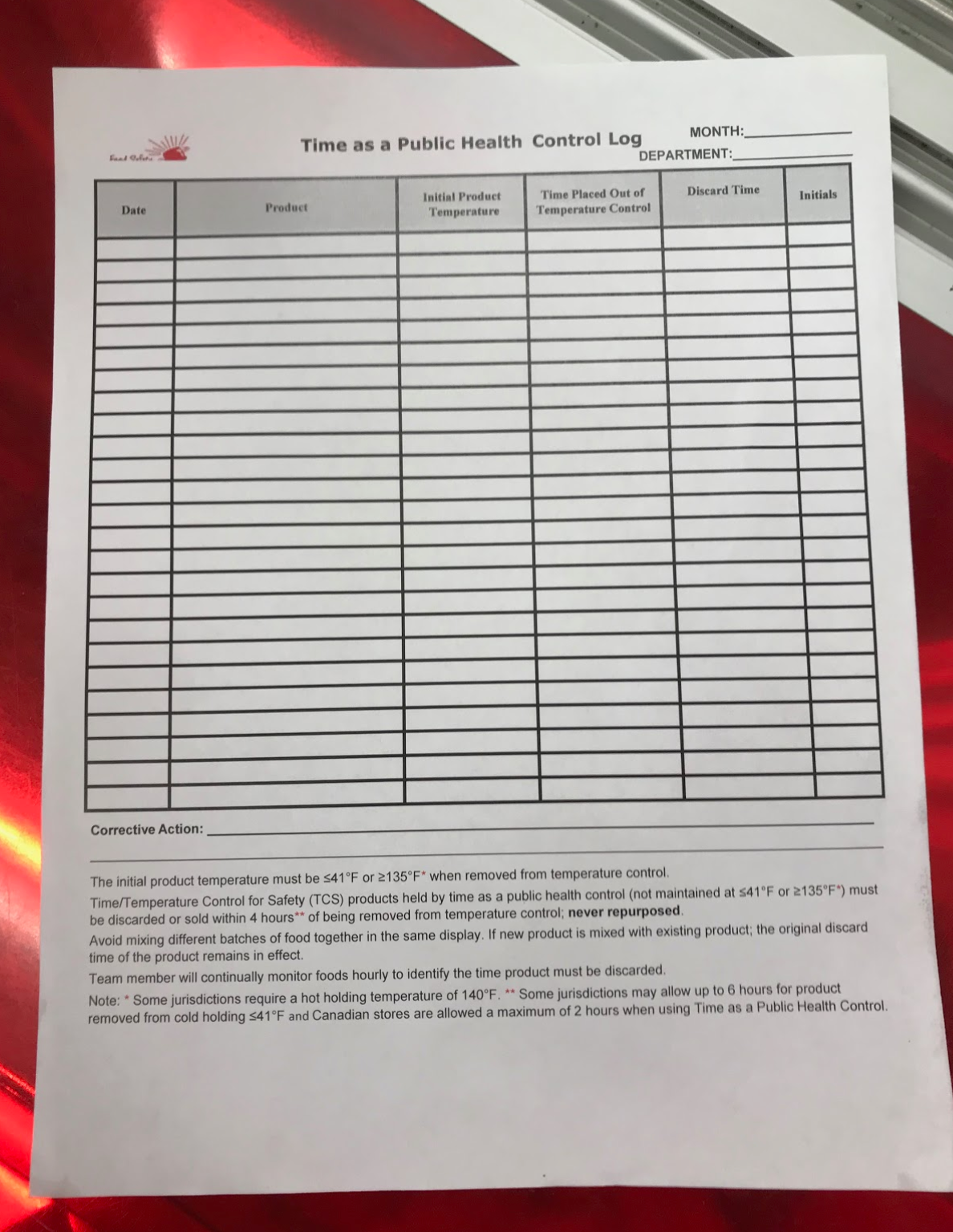
The analog "control log"
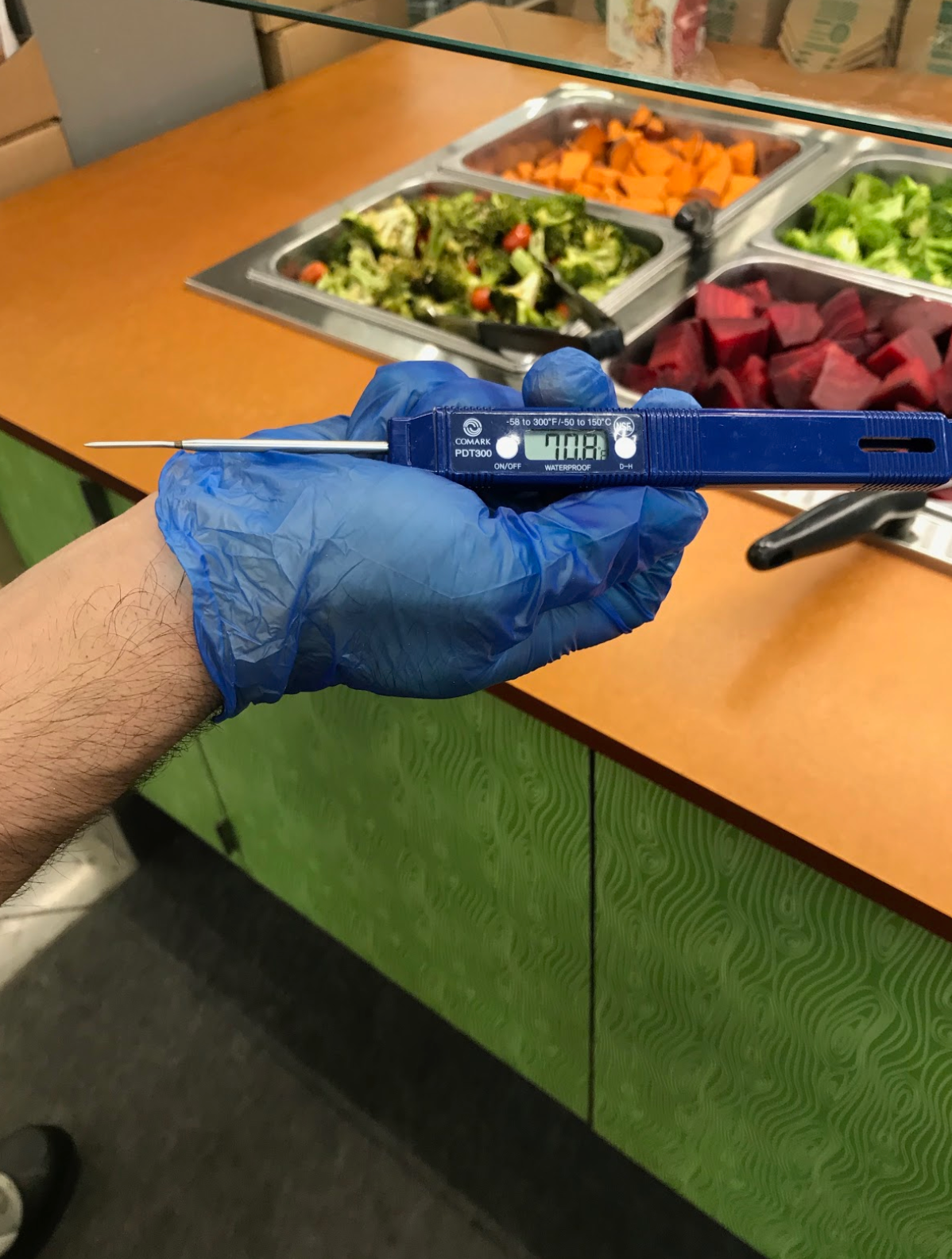
Method to test temperature
Waste Tracking & Analytics, out of all solutions, offers the greatest business benefit to restaurants, almost $266 million per year
ReFED. 2016. A Roadmap to Reduce U.S. Food Waste by 20 %. Solutions Impact Model, unpublished.
IDEATION
A New Food Delivery App
I hypothesized how data could be collected through sensors and infrared cameras in food trays, and around the food service bar. By applying machine learning algorithms to the data you can predict whether food will be available. The data could then be broadcast to the users on the app. AI would provide the best last-minute food options to users based on location and availability.
Provider:
Currently, a restaurant or market replenishes food during business hours in anticipation of selling it. Overeats uses a system of sensors and IR cameras to monitor prepared foods, measuring food temperature, quantity and sell by limits. Machine learning and cloud computing give restaurants and markets real-time data to prevent food waste and monetize surplus food.
Consumer:
Overeats allows users to browse selections of surplus food from restaurants and markets by entering their location and exploring nearby deals. Once the selection is made and purchased through the app, customers have the option to pick up their order at a specified time or have it delivered.
PERSONA
Identifying Users
The four provisional persona’s for Overeats are Shaun and Kelly: consumers and Andre and Marlena: providers. They were created from user interviews and critical insights from my research as a tool to communicate my users’ motivations, goals, and behaviors.
JOB STORIES
Identifying Tasks/Consumers
User behaviors were translated into JTBD stories to understand the progress my user wants to make towards their goal by assessing their real needs.
I used a customer journey map to visualize information and discover, document, and share the bigger picture of what my users actually experienced. Mapping the entire end to end experience allowed me to uncover unmet needs and opportunities to improve the task flow of the app.
PROTOTYPING
On boarding SCREENS
I had a general idea of what I wanted to test so my designs were quickly created and prototyped in Figma and Adobe XD. To introduce users to the concept of buying last minute food at participating restaurants and markets, I knew it was critical to have a few walkthrough screens.

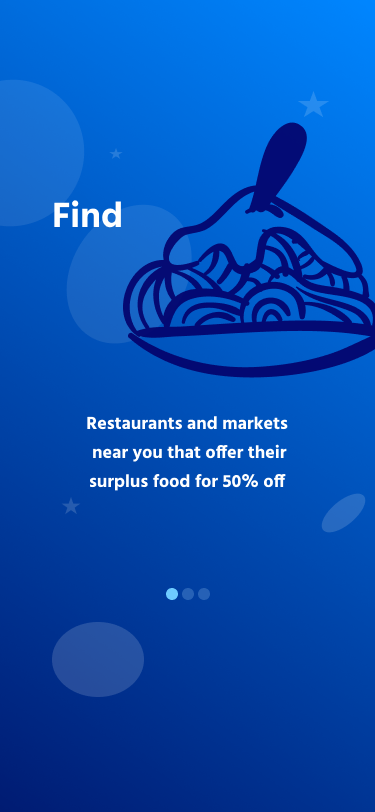
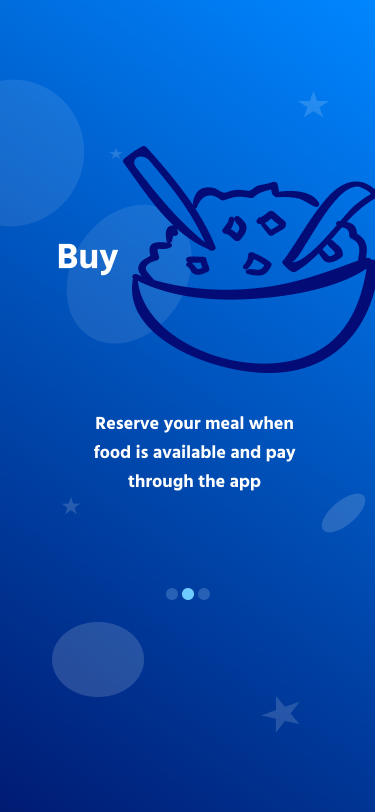
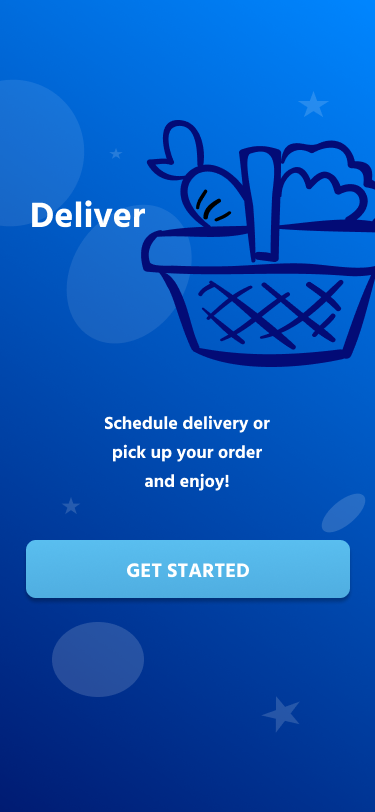
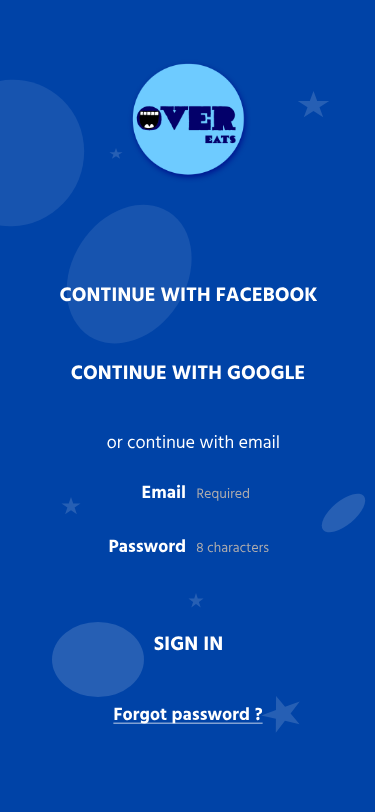
From my job stories I learned users wanted to be notified when last minute food is available. They also wanted to filter by preferences and select quantity to purchase through the app.
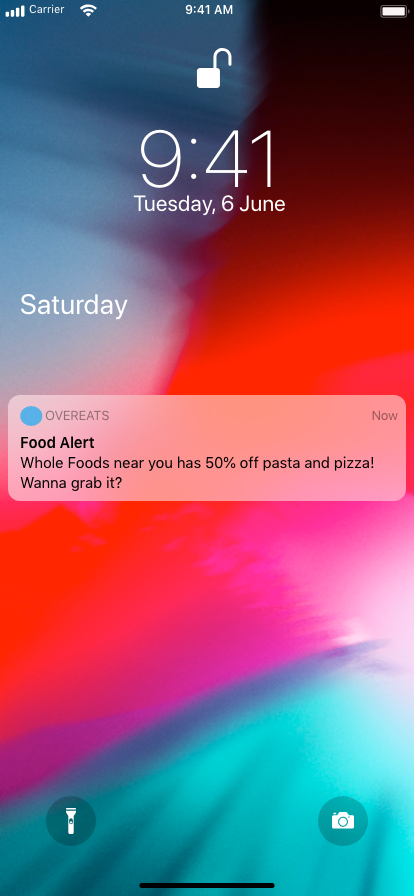
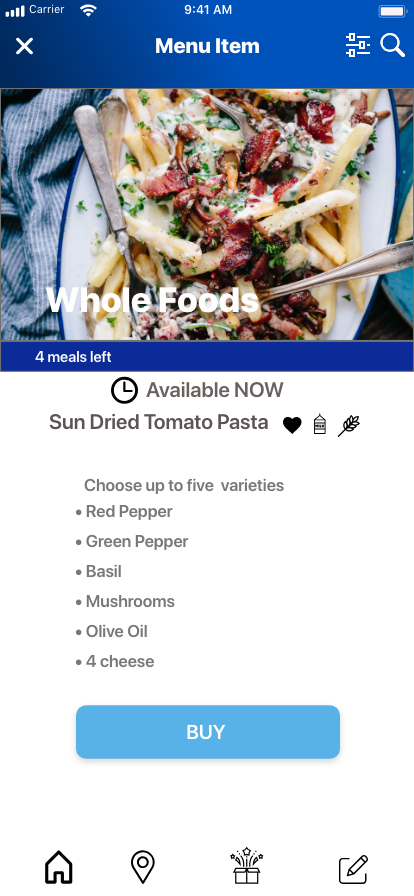

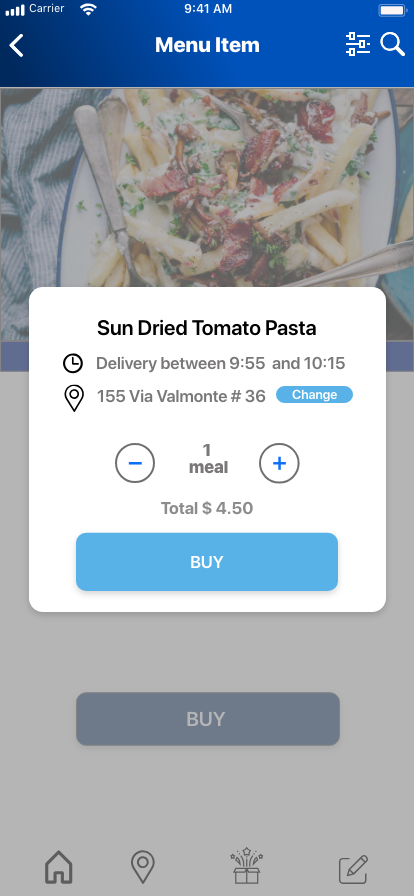
FEEDBACK
USER TESTING
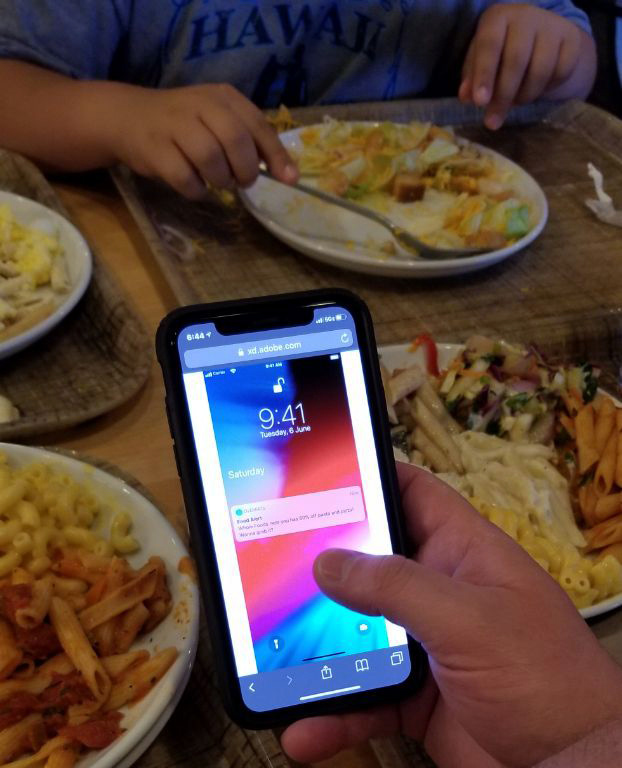
Notification prompted curiosity
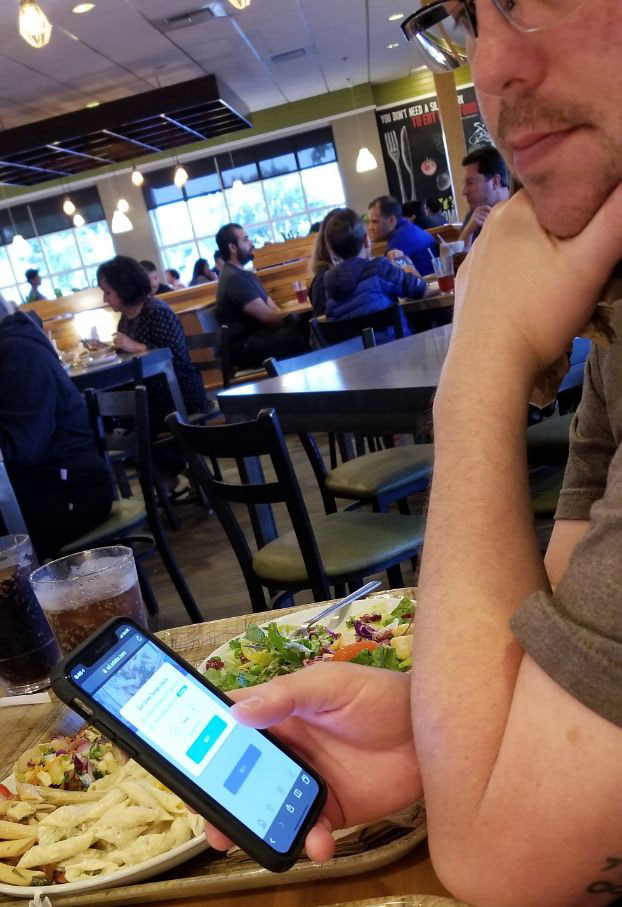
Questioned whether he could buy food from multiple restaurants
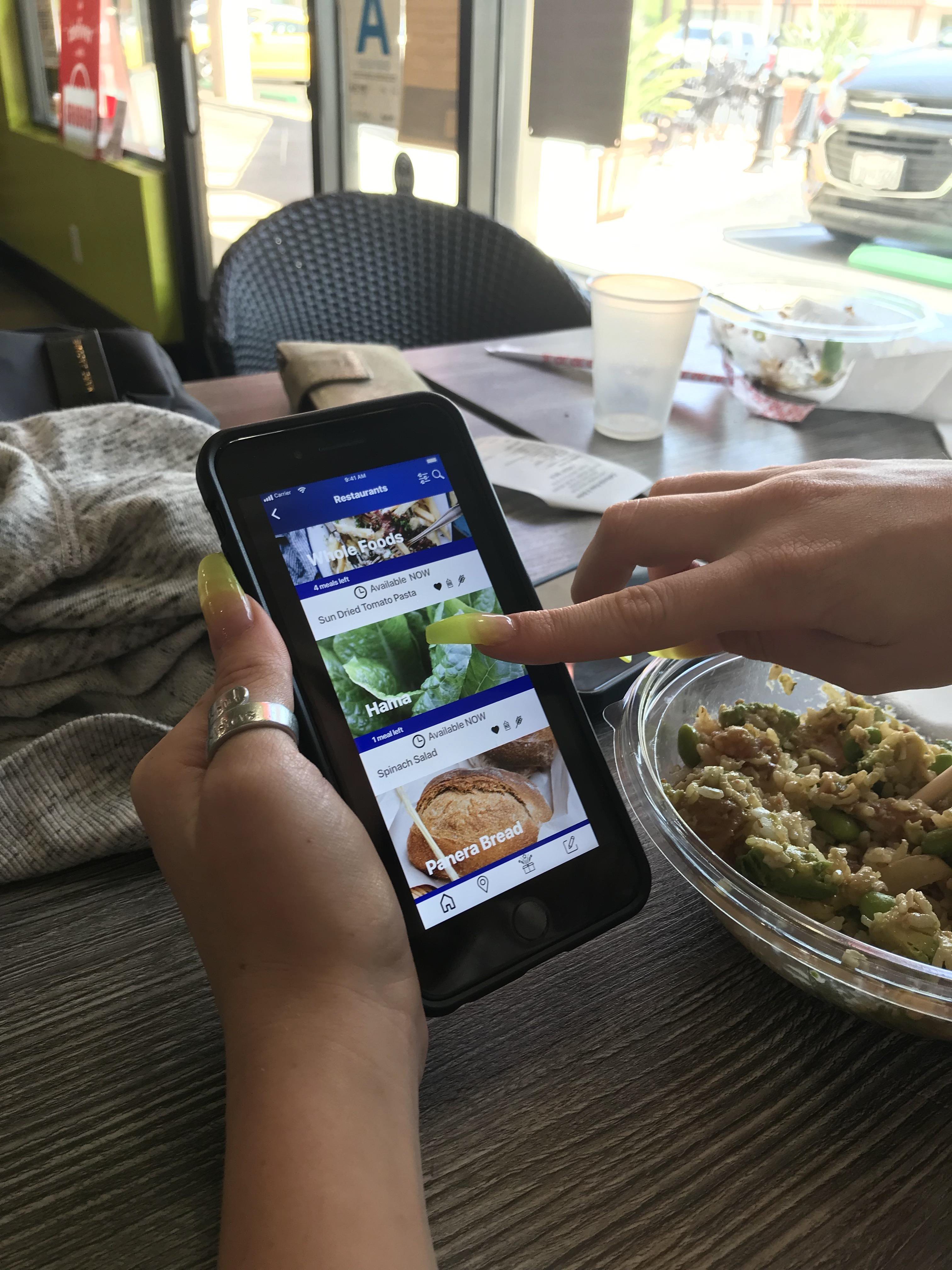
User scrolling through filtered choices
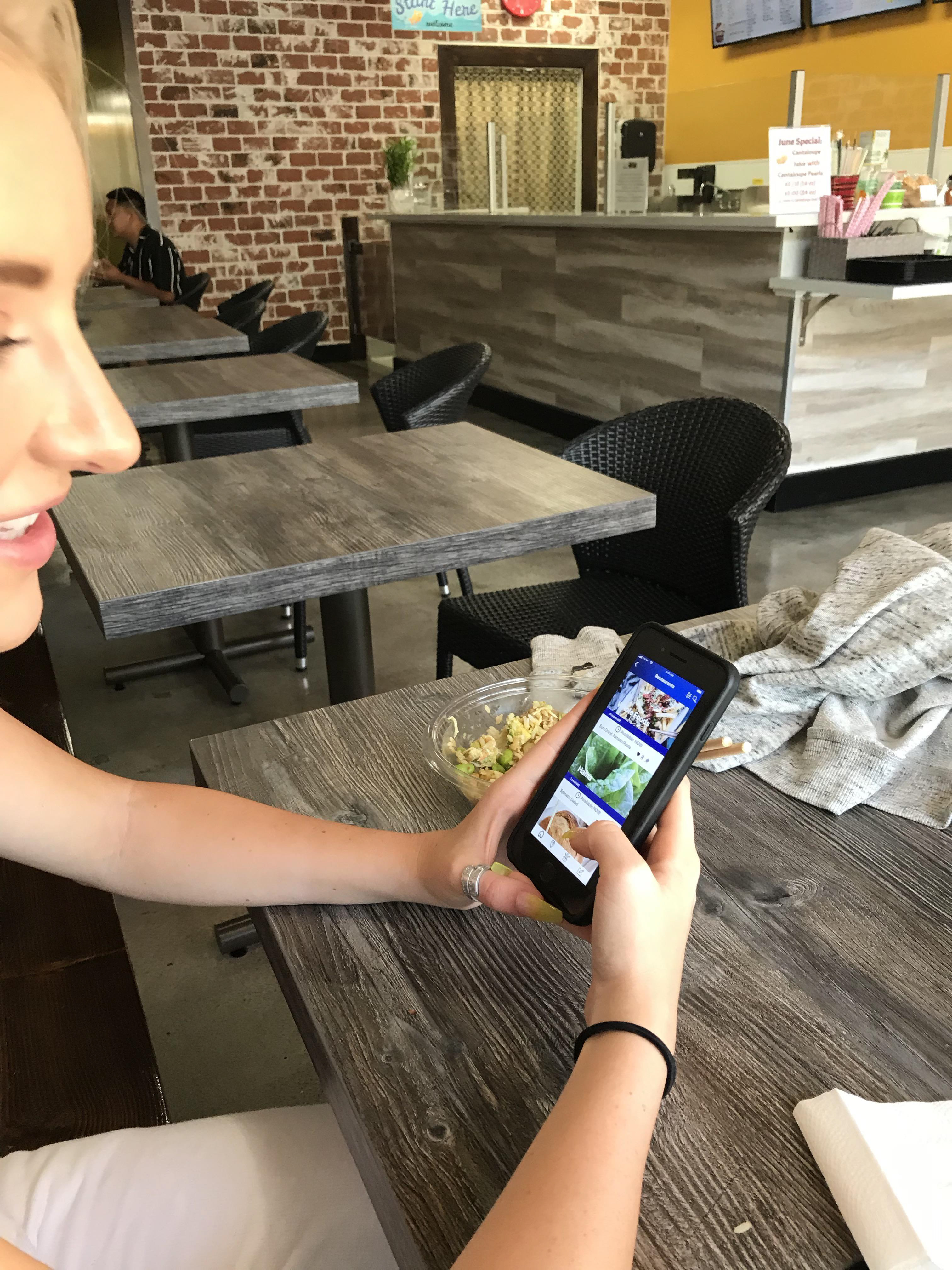
User appreciated seeing when food was available on this screen
I tested my prototype with users in restaurants that I had visited before to see how accurate my assumptions were. This wasn't about making a perfect app, I used a hi fi prototype for realism and to avoid criticism based on design. The screens I did create were enough to validate the concept. I asked the following questions of my users:
Q- Do you understand what this product or service does?
Users understood from the walkthrough but had questions about the product details
Q- How do you feel about this product or service?
Mostly positive responses. There were no ethical concerns which I suspected may occur.
Q- What scenarios can you imagine yourself in using this app?
After work, on my break, when I'm tired and broke, anytime, who wouldn't check it out first?
“Why is the food 50% off” (asked 6/12 times)
male, age 30's
“Can I place an order like a regular app ”
female, age 21
“Can I order from multiple restaurants at once? ”
male, age 32
REFLECTION
WHAT I LEARNED
FUTURE CONSIDERATIONS
The first round of testing of an app that sells last minute food in L.A. was to see if the product’s design matches its purpose. I was curious to learn what uses wanted to do with it, and what would motivate my users to use it. Providers: I would test the steps of implementing the service such as opting in, installing the app, receiving and installing the sensors, syncing the sensors to their account etc... Insights gathered from the experience would test the feasibility of the process and allow me to expand development for providers.
TAKEAWAYS
Once the barrier of convincing a user that the food Overeats sells is no different than food you could buy if you were in the restaurant or market, the response was overwhelmingly positive. Users were eager to try the service and expressed no hesitation.
Perceptions of food vary and what is acceptable to some people may not be acceptable to others. Some users wanted to be sure that the food they ordered was "guaranteed" and felt more confident if they could see the food first.
Users loved the idea of saving money especially at night when they didn't feel like or couldn't go out. They were willing to sacrifice hours of availability to get discounted food and accepted the fact that it wasn't consistently available.
Tackling the issue of food waste has changed my eating habits. I am cognizant of the food I buy, eat and throw away everyday. Overeats could possibly be a way to shift consumer behavior towards food purchasing and make a dent in the food waste crisis.
